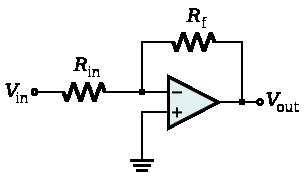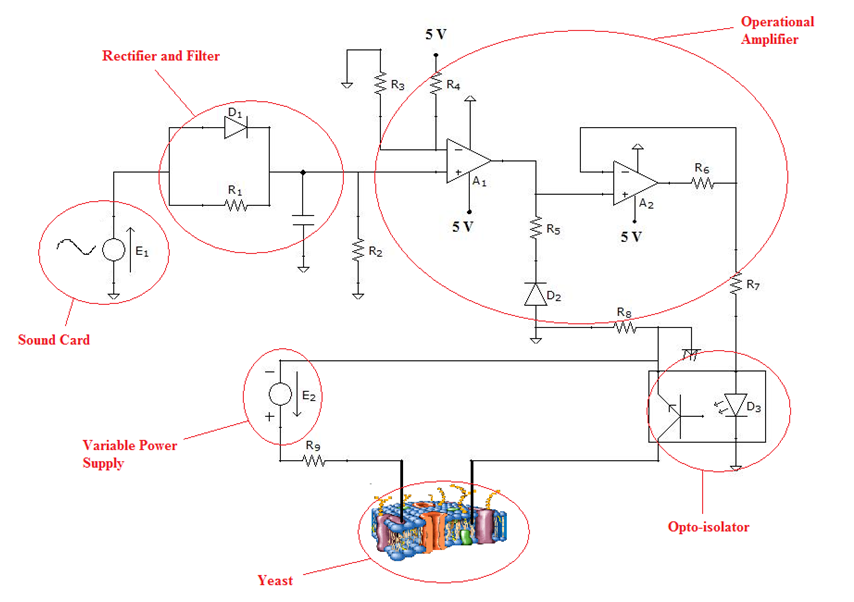Team:Valencia/Hardware
From 2009.igem.org
| Line 23: | Line 23: | ||
*'''Electrostimulation for yeast''' | *'''Electrostimulation for yeast''' | ||
| - | Our team has developed '''an electronic circuit''' capable of | + | Our team has developed '''an electronic circuit''' capable of applying a voltage between 0 V and 24 V with a precision of 0.1 volts and during time intervals of up to 20 ms. to yeast cultures. This circuit will be used in a first stage to characterize the part BBa_K222000 or what we call LEC. In the characterization, this system supply the initial estimulation conditions for the cells for the different experiments very precisely, making the results obtained with the luminometer of great confidence.<br> |
| - | + | The experimental device is composed of the following parts:<br> | |
| - | + | The first one is composed of a voltage source and two electrodes to stimulate the cultures.<br> | |
| - | + | The second one is an optocoupler performing the function of an electronic switch. It is composed of a led diode and a phototransistor. The phototransistor will allow to pass the voltage signal meanwhile the diode is illuminated.<br> | |
| + | The last part is the responsible of the fine control of the time period in which the voltage is applied. To do that we stimulate the diode with a PC sound card (it has a precision voltage signal that usually is transformed by buffers to reproduce sound) controlled by the function “sound” of the MatLab software.<br> | ||
| + | The output signal of the soundcard was modified by a rectifier-filter and then passed through two operational amplifiers (one as a amplifier and the other as a tension buffer) in order to produce a very precise signal able to activate the optocoupler. The amplifiers are powered by 5 volts and ground, so we will have 5 volts at the output of the operational when the sound card is active, and 0 volts when idle. | ||
[[Image: V_ElectroYeast.png|700px]] | [[Image: V_ElectroYeast.png|700px]] | ||
<br><br> | <br><br> | ||
| - | This design | + | This design allows for stimulating one channel. In order to make a working screen, we will need an array of electrodes connected to a multiplexer. See next section...<br><br> |
Revision as of 17:28, 21 October 2009
LEC activation
Our team prides itself in finding ways to link electronics to biology in a direct and innovative fashion. As a consequence we spent considerable time developing circuits and equipment allowing for quick and robust control of cellular physiology.
- Direct electrical stimulation of cells
The first part of hardware design is an electronic amplifier capable of delivering range of voltages between 0 and 13 volts. It is based on an inverting amplifier (fig. 1). The input voltage comes from a sound card – a commonly accessible and low cost digital to analog converter. It allows us to control the waveform in an arbitrary fashion using a simple Matlab script.
The output is connected to platinum electrodes inserted into a buffer over either muscular, neuronal or yeast cells. We stimulate cells with delta-function pulses every second (or a few of them) to get continuous calcium influx. While muscular and neuronal cells respond to this kind of stimulus naturally, yeast will require some work. We hope that electrical stimulation of yeast could be obtained thanks to a heat-shock response (read more in modeling section) or reported calcium response to electroporation.
- Electrostimulation for yeast
Our team has developed an electronic circuit capable of applying a voltage between 0 V and 24 V with a precision of 0.1 volts and during time intervals of up to 20 ms. to yeast cultures. This circuit will be used in a first stage to characterize the part BBa_K222000 or what we call LEC. In the characterization, this system supply the initial estimulation conditions for the cells for the different experiments very precisely, making the results obtained with the luminometer of great confidence.
The experimental device is composed of the following parts:
The first one is composed of a voltage source and two electrodes to stimulate the cultures.
The second one is an optocoupler performing the function of an electronic switch. It is composed of a led diode and a phototransistor. The phototransistor will allow to pass the voltage signal meanwhile the diode is illuminated.
The last part is the responsible of the fine control of the time period in which the voltage is applied. To do that we stimulate the diode with a PC sound card (it has a precision voltage signal that usually is transformed by buffers to reproduce sound) controlled by the function “sound” of the MatLab software.
The output signal of the soundcard was modified by a rectifier-filter and then passed through two operational amplifiers (one as a amplifier and the other as a tension buffer) in order to produce a very precise signal able to activate the optocoupler. The amplifiers are powered by 5 volts and ground, so we will have 5 volts at the output of the operational when the sound card is active, and 0 volts when idle.
 "
"

